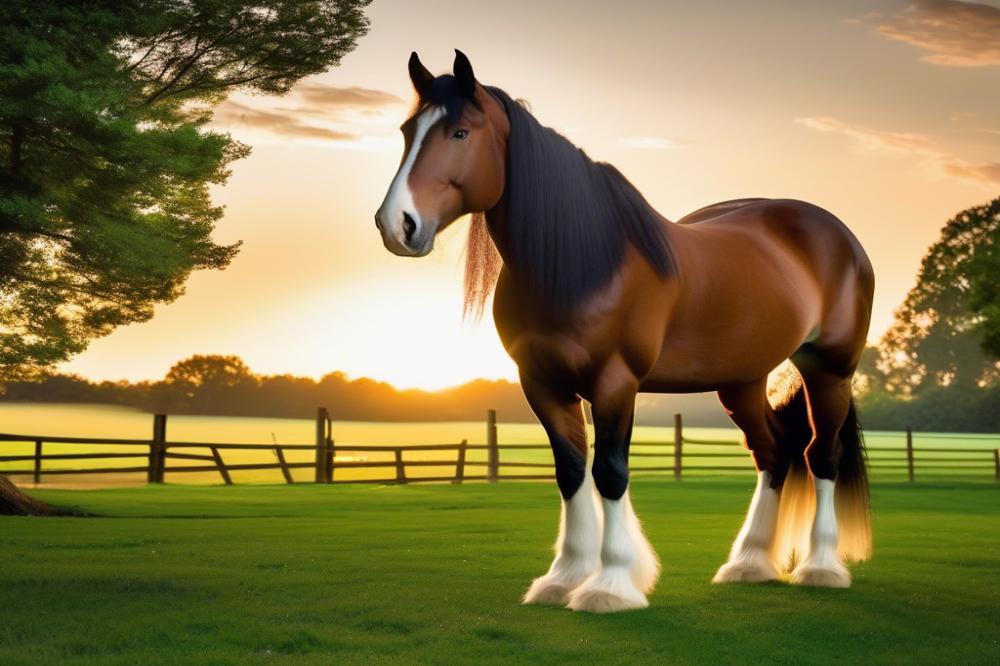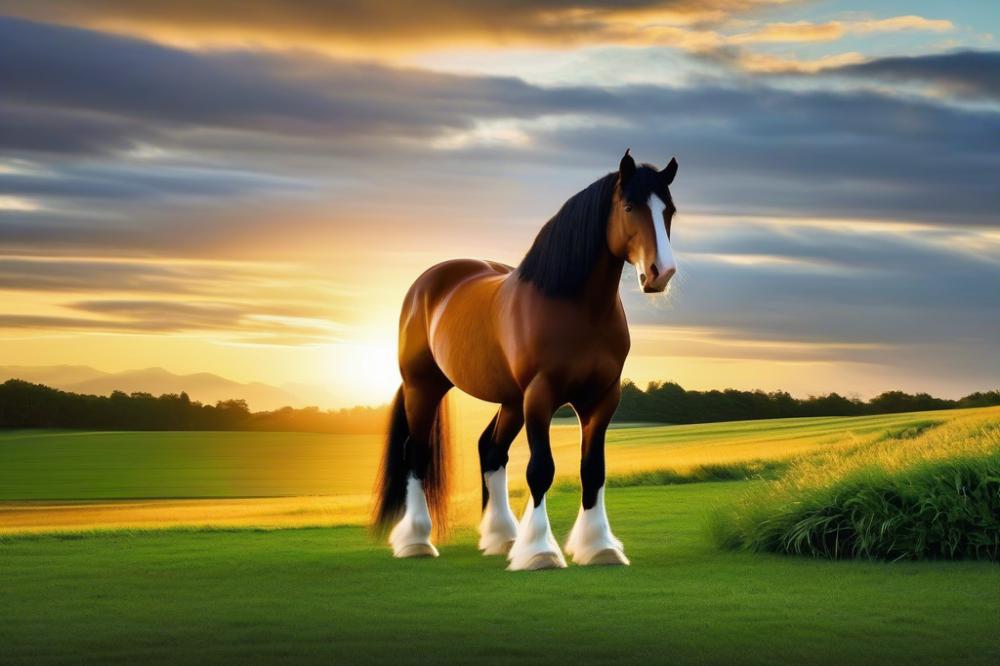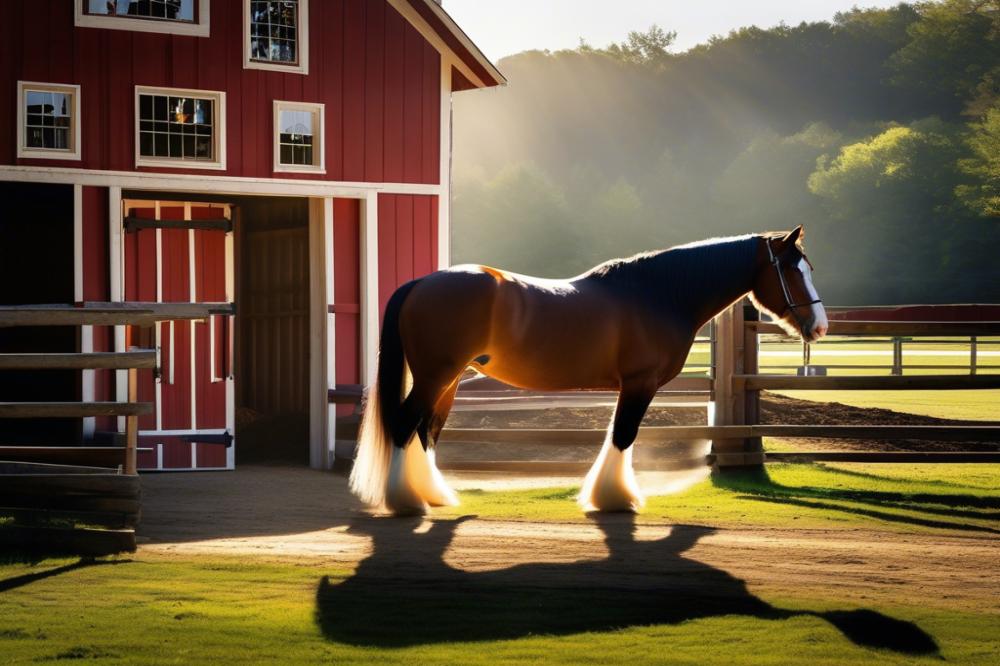How to Train and Ride a Clydesdale for working tasks
Overview of Clydesdale Characteristics
Clydesdales are impressive horses known for their large size and grace. Recognizable by their long legs and heavy build, they often capture the admiration of many. These majestic animals have a calm demeanor and a gentle temperament, making them suitable for a variety of tasks. Their thick coats, most commonly bay with white markings, add to their striking appearance. Often used in farming and logging, Clydesdales possess strength and endurance that is almost unmatched among horse breeds.
Importance of Proper Clydesdale training
Training is critical to harnessing a Clydesdale’s abilities. A well-trained horse becomes a reliable partner in any working tasks you require. Proper instruction starts early, setting the foundation for good behavior and trust. Horses need consistency in their routines; it helps them understand what is expected of them. Without proper guidance, even the strongest Clydesdale can become difficult to manage. Ensuring they are trained effectively increases their safety and your own, creating a positive experience for both.
Purpose of the Article
This article aims to provide insights into training and riding Clydesdales for various work tasks. Readers will gain useful techniques that are simple yet effective. Methods discussed will cover not just basic training but also tips for riding confidently. Whether you’re a beginner or an experienced horse owner, this guide will help you connect with these magnificent animals. Discover ways to tap into their potential, and enjoy the journey of building a strong bond with your Clydesdale.
Clydesdale training

Training any horse involves understanding some basic principles. Horses learn in different ways. It is essential to use patience and positive reinforcement throughout the process. Relying on fear or harsh methods can lead to mistrust and behavior problems. Every interaction is a learning opportunity for both the horse and the trainer.
Understanding horse training Principles
The foundation of good training lies in consistent communication. Horses respond well to clear cues. Using the same signals helps a horse understand what is expected. Timing is also crucial. Rewarding the horse immediately after it performs the right action reinforces good behavior.
Importance of Early Groundwork and Socialization
Start groundwork early, ideally when the horse is a foal. Groundwork teaches them how to respond to you on the ground before you ride. Socializing with other horses and people builds confidence. A well-socialized Clydesdale can handle various situations calmly. Exposure to different environments and experiences reduces anxiety later on.
Building Trust and Respect with Your Clydesdale
Establishing trust takes time and patience. Create a bond by spending time together. Simple activities, like grooming or feeding, can strengthen your relationship. Always remain calm and assertive during training. Showing respect for your Clydesdale’s needs and feelings goes a long way. A horse that trusts its handler is more likely to cooperate.
Techniques for Effective Clydesdale riding
When riding a Clydesdale, start with the basics. Focus on proper saddling and bridle fitting. Comfortable equipment makes a big difference in a horse’s performance. Begin in a controlled setting, such as an arena or a round pen. Gradually introduce obstacles and more challenges to build confidence. Pay attention to your posture, as it influences the horse’s movements. Clear signals will help the horse respond to your guidance. Practice consistently to develop this critical partnership.
Equine Behavior and Communication

Understanding Clydesdale behavior
Clydesdales are known for their gentle nature and strong build. These horses often exhibit friendly behavior, but they can also be sensitive. Recognizing how they react to different situations is key to training. A properly trained Clydesdale will respond well to both verbal cues and body language. Daily interactions with them can reveal how they feel in various environments. Some horses may be more confident, while others might require more reassurance.
Reading body language and signals
Observing a Clydesdale can provide vital clues about its emotions. Ears that point forward indicate curiosity or interest. When ears lay back, it may suggest discomfort or annoyance. The position of their tail can also be telling; a relaxed tail signifies calmness, while a swishing tail often reveals irritation. Understanding these signals helps in establishing a trusting relationship. Pay attention to their overall posture and movements for more insights.
How to respond to equine communication
Responding to a Clydesdale’s behaviors should be done with care. If they show signs of stress or discomfort, speaking softly can help ease their worries. A gentle touch may provide comfort, reinforcing a sense of safety. Avoid sudden movements, as these might startle them. By staying calm, you encourage the horse to remain relaxed. Positive reinforcement is effective; reward good behavior with treats or praise.
Building a bond through patience and consistency
Creating a strong bond takes time and effort. Spend time with your Clydesdale, even when you are not training. Consistency in your approach is vital. Repeated routines can create a sense of comfort for the horse. Use the same commands and cues each time to avoid confusion. Patience is equally important. Progress may be slow, but small victories matter. Celebrate them, and stay committed.
Draft Horse Care and Management

Daily Care Routines for Clydesdales
Clydesdales need daily attention. Start each morning by checking their water supply. Fresh and clean water is essential for hydration. Provide hay and grain based on their workload. A good routine keeps them healthy and happy. Wearing a halter can make handling easier. Spend time with them to build trust. Establishing a connection is important in their training.
Nutrition and Feeding Considerations
A balanced diet is crucial for these draft horses. High-quality hay forms the foundation of their meals. Concentrated grains can supplement energy, especially during demanding tasks. Consult with a veterinarian for specific dietary needs. Regularly monitor their weight to avoid obesity. This breed is known for its size, so controlling their diet is necessary. Ensure they have access to salt licks and minerals.
Routine Health Checks and Veterinary Care
Frequent health checks are vital. Inspect eyes, ears, and hooves for any signs of issues. Look for signs of colic or unusual behavior. Schedule regular veterinary visits for vaccinations and dental care. Hoof care is essential; consider regular farrier visits for trimming. A healthy Clydesdale can efficiently handle work tasks. Keeping a record of health treatments can help track their well-being.
Grooming and Maintenance Tips for Draft Horses
Daily grooming helps maintain coat health and hygiene. Use a curry comb to loosen dirt and debris. Follow up with a stiff brush to remove loose hair. Pay attention to sensitive areas such as the belly and legs. Regularly check for ticks or skin conditions. Don’t forget to clean their hooves; this prevents infections. Grooming can also be a bonding experience. Take your time and enjoy the process.
Proper Harnessing and Equipment
Choosing the Right Harness for Working Tasks
Selecting the appropriate harness is vital for effectively working with Clydesdales. Different tasks require specific designs. For instance, if plowing fields, a heavy-duty harness is necessary. There are leather and synthetic options. Consider the climate and usage when making a choice. Leather is often durable but may require more maintenance. Conversely, synthetic materials are often lighter and easier to care for.
Fitting the Harness Correctly
A proper fit is crucial for comfort and control. Start by placing the harness on your horse. Adjust each strap while observing how it sits on the Clydesdale. Pay attention to the withers and shoulders. Straps should not dig into the skin or rub against sensitive areas. Move around the horse to check for any tight spots. It’s essential that the horse can move freely. Remember to leave enough room for the horse’s natural motion.
Safety Checks Before Riding or Driving
Conducting safety checks is an important step before any activity. Always examine the harness for wear and tear. Look for frayed straps or broken hardware. Check the buckles to make sure they fasten correctly. Adjust any loose fittings to prevent accidents. Inspect the horse’s feet and legs as well. A healthy horse is key to a successful working day. Lastly, observe the horse’s demeanor. A calm horse is more likely to perform tasks well.
Understanding Different Types of Harnessing Techniques
Harnessing techniques vary depending on the task at hand. The breastcollar style tends to work well for lighter loads. This style distributes weight across the horse’s chest, lessening the strain. A full collar harness is better for heavier pulling tasks, like logging or plowing. This type provides better control and more even weight distribution. Knowing when to use each technique improves efficiency. Always consider the training of the horse and your familiarity with these methods.
Clydesdale riding techniques
Essential Riding Skills for Clydesdales
Clydesdales are strong and heavy horses. Riding them effectively requires specific skills. The first step is understanding the horse’s size and strength. Riders must be confident yet gentle. Building trust is vital for a smooth partnership. Start by establishing a strong connection on the ground before getting into the saddle. This practice sets the stage for a productive riding experience.
Posture and Balance for the Rider
Maintaining good posture is crucial when riding a Clydesdale. Sit up straight and keep your shoulders relaxed. A balanced seat allows for better communication with your horse. Make sure your heels are down and your legs hang softly against the horse’s side. This way, the rider can absorb the horse’s movements without losing stability. Strong core muscles are key. They help maintain balance during transitions and turns.
Using Cues and Aids Effectively
Clear communication is essential when working with Clydesdales. Riders should use both verbal cues and body language. A light squeeze of the legs can signal the horse to move forward. Pulling gently on the reins can ask for a stop. It’s important to be consistent with cues for the best results. Over time, a horse learns to respond to subtle changes in the rider’s body. Practicing these signals builds a better bond between horse and rider.
Incorporating Exercise Routines into Riding
Regular exercise keeps both horse and rider in shape. Plan rides that include various tasks such as walking, trotting, and cantering. This variety ensures the horse stays engaged while developing strength. Consider including obstacles or challenges during your ride. It could be as simple as a change of terrain or navigating through cones. These methods prevent boredom and promote physical fitness for working tasks.
Driving Techniques for Working Tasks
Basic Principles of Driving a Clydesdale
Driving a Clydesdale requires understanding its unique nature. These horses are strong, yet they need gentle guidance to perform well. Calmness is essential when you’re in the harness. A steady approach helps them feel secure. Maintaining a confident stance encourages trust between you and your mount. Whether pulling a plow or a cart, communication needs to be clear.
Commands and Signals for Driving
Using specific commands can greatly enhance your driving experience. Standard vocal cues include “walk,” “trot,” and “whoa.” Clear, precise signals will help your horse understand what is expected. Hand signals also play a significant role. For instance, a raised hand can indicate a stop. Consistency in your commands leads to better responses. Always practice these cues to build strong associations.
Types of Equipment Used for Driving
Equipment is crucial for successful driving sessions. A sturdy harness properly fitted to your Clydesdale is necessary. Choose a safe and comfortable driving cart designed for heavier weights. Additionally, reins should be well made to ensure firm control. Always check your gear for wear and tear before using it. The right tools enhance both performance and safety while working.
Establishing a Working Relationship with Your Clydesdale
Building a relationship with your horse enhances the driving experience. Spend time together outside of work tasks. Grooming and handling gently can strengthen trust. Recognizing your horse’s body language is essential for effective communication. Encourage responsiveness with positive reinforcement. A bond established with patience creates better cooperation during tasks. Your Clydesdale wants to work with you, not against you. Mutual respect fosters a desirable working environment.
Responsible Ownership and Care
Owning a Clydesdale requires serious commitment. These gentle giants do not just need food and shelter; they demand attention, love, and care. Many first-time owners do not realize the level of responsibility involved. However, understanding this is vital for both you and the horse.
Creating a safe environment is essential. Start by providing a stable that protects from harsh weather. Ensure there is ample space for your horse to move and graze comfortably. Check fences regularly to avoid any escape attempts. Proper footing in pastures and stalls can prevent injuries.
Supporting your Clydesdale’s physical and mental well-being is crucial. Regular exercise helps keep muscles strong and builds endurance. Just like humans, horses need mental challenges too. Training sessions, new tasks, or obstacles keep their minds sharp. Pay attention to signs of stress or boredom.
Preparing for lifelong companionship and work can be rewarding. Clydesdales can live for 20 years or more. This is a long-term partnership, so consider your lifestyle when making this choice. Visits to a veterinarian should happen regularly, along with dental care and vaccinations. Building a bond over the years will enrich both of your lives.
Final Thoughts
Training a Clydesdale for work is not just a task; it is a journey. These majestic animals require dedication and skill. horse training involves more than just commands. It builds trust between the rider and the horse, fostering a strong bond. Proper techniques can make all the difference in your experience and success.
Responsibilities also play a vital role when working with these gentle giants. Owners must prioritize their needs alongside their tasks. Nutrition, exercise, and regular check-ups are essential. Keeping the horse healthy can lead to better performance and a happier partnership. Respect and patience are crucial in the process of Clydesdale riding as well.
For those thinking about owning or training a Clydesdale, there lies great potential. Embrace the challenges and enjoy the rewards that come with working with such a powerful breed. Each moment spent learning and riding is a chance to grow as both a rider and a caretaker. Seek guidance from seasoned trainers and be open to learning from every experience. This unique journey will be as rewarding as it is demanding.
In closing, remember that your effort in training and care directly impacts your Clydesdale’s success. With commitment, you can build a reliable work partner. The bond formed through training will make every task more enjoyable. So, take that leap, be patient, and relish the experience of working alongside your magnificent Clydesdale.



